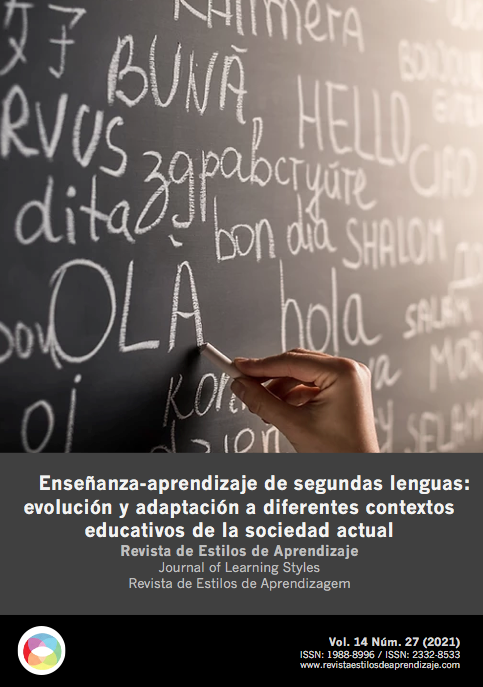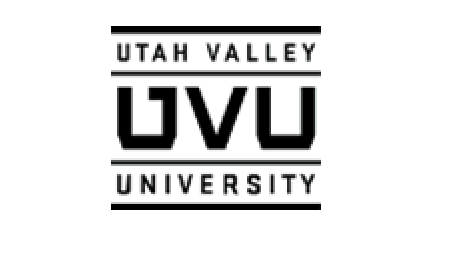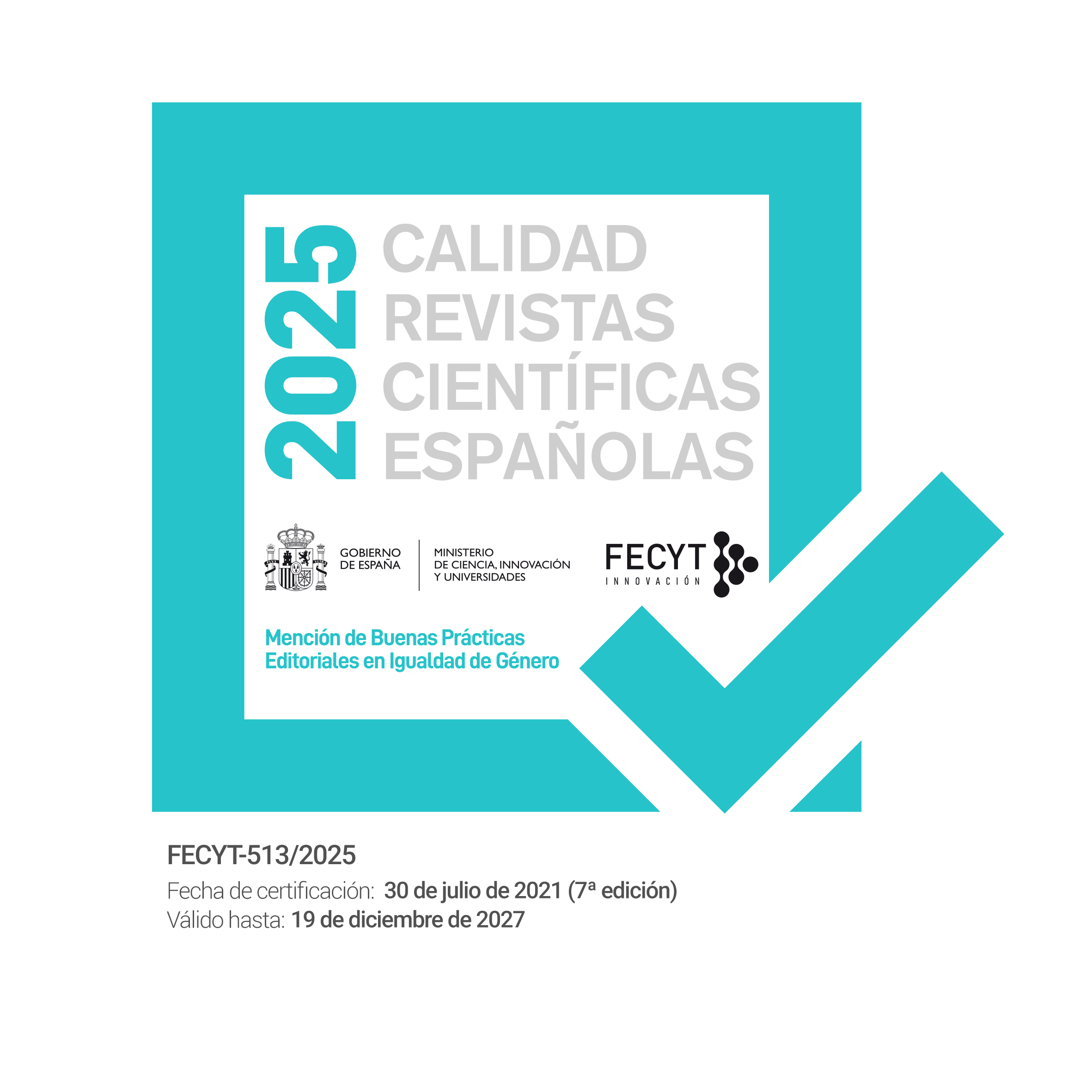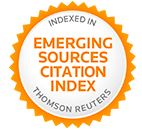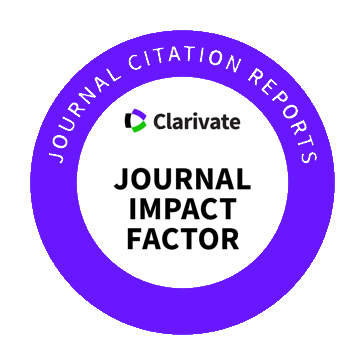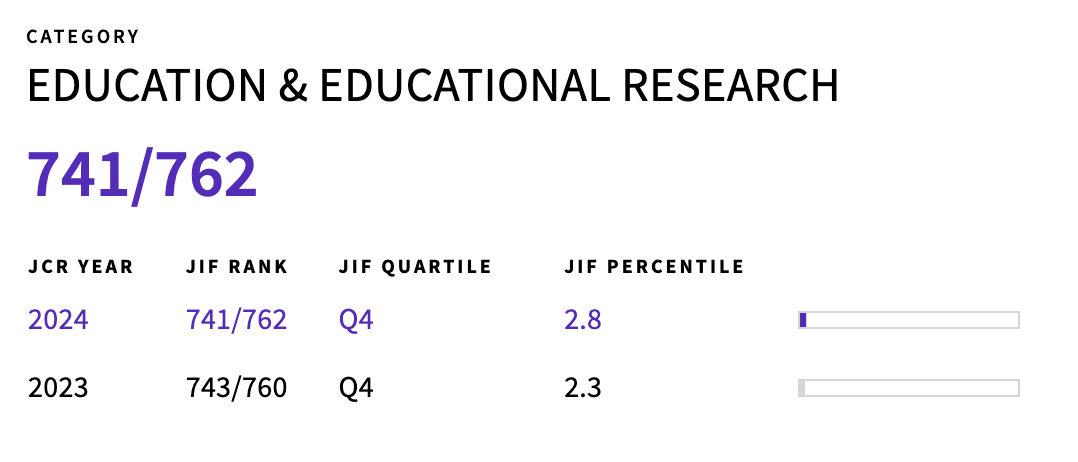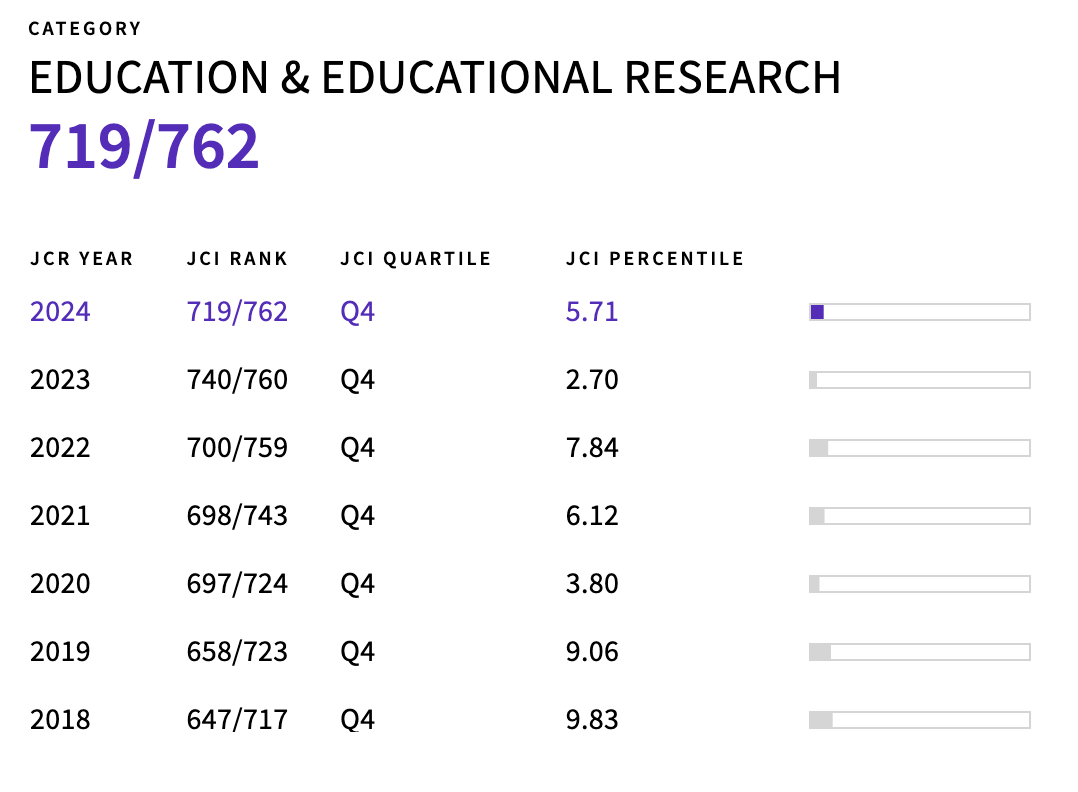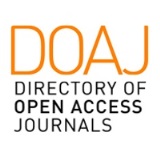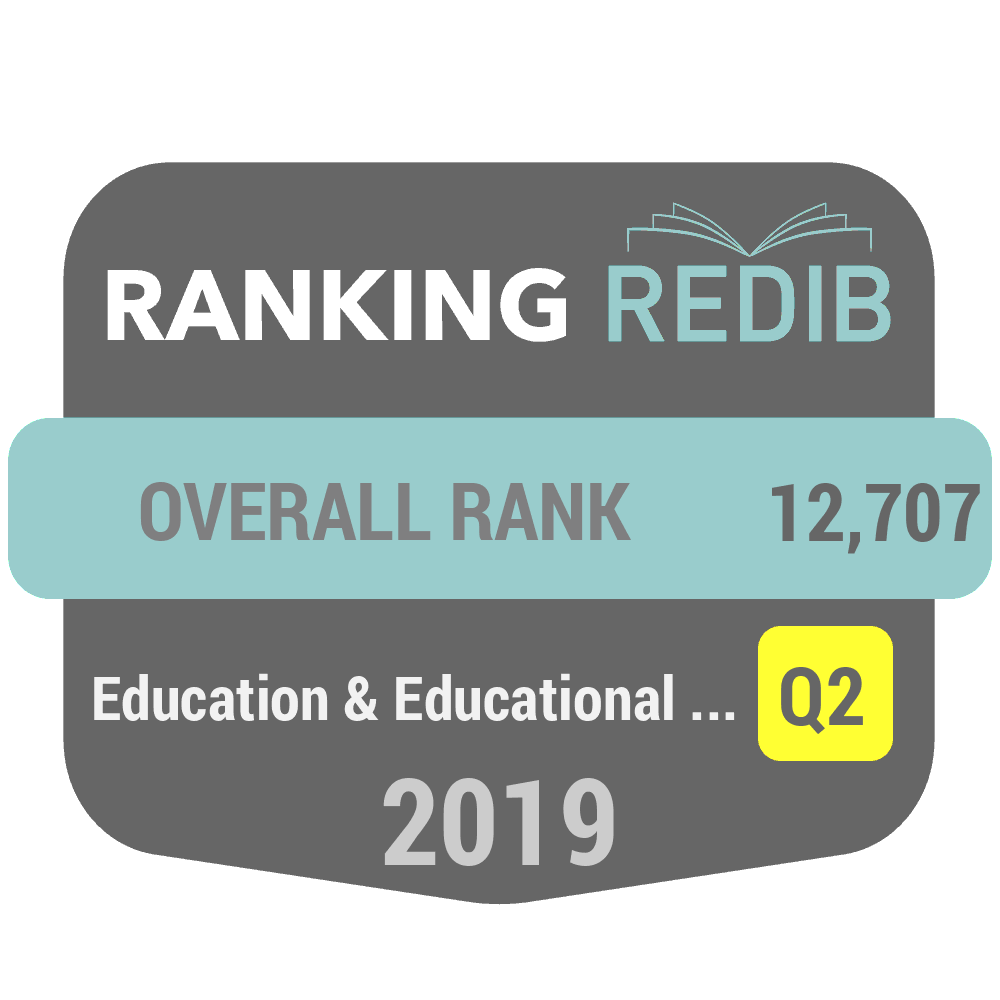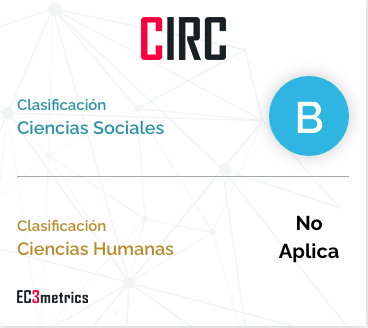Evolution of bilingual education in pre-university stages in Castile-La Mancha
DOI:
https://doi.org/10.55777/rea.v14i27.2734Keywords:
bilingualism, Bilingual programmes, educational offer, Castilla-La ManchaAbstract
The importance of the richness of the linguistic and cultural diversity present in the European Union cannot be doubted; hence the insistence that the knowledge of languages is an essential element in the personal and professional development of all citizens. Consequently, to this day, bilingualism is an indispensable and compulsory educational offer in all the countries that make up the European space. As a result, the Castilla-La Mancha Ministry of Education, like the rest of the regions of Spain, bets on this type of education not only to train their students linguistically but also to transmit content. The objective of this contribution is to analyze the existing bilingual programmes in the Castilla-La Mancha region and reflect on their incidence in each of its provinces. To do this, a comparative casuistic analysis will be carried out by bilingual programs, language combinations and number of active programs. The results will show possible causes before the unequal representation and presence of bilingual programmes in Castilla-La Mancha and will expose what the pending bets that the regional administration must face are.
Downloads
References
Admiraal, W. G.; Westhoff, y de Bot, K. (2006). Evaluation of bilingual secondary education in the Netherlands: Students’ language proficiency in English. Educational Research and Evaluation, 12, 75-93. DOI: https://doi.org/10.1080/13803610500392160
Alonso, E.; Grisaleña, J., y Campo, A. (2008). Plurilingual education in secondary schools: Analysis of results. International CLIL Research Journal, 1 (1), 36-49. http://www.icrj.eu/11/article3.html.
Anderson, B. (Rev Ed) (1991). Imagined communities. Reflections on the origin and spread of nationalism. London: Verso.
Baker, C. (2011). Foundation of bilingual education and bilingualism (5 ed.) Clevedon, UK: Multilingual Matters.
Barcelona European Council. (2002). Multilingualism. European Commission. Recuperado de http://ec.europa.eu/education/policy/multilingualism_en.
Beacco, J. C. et al. (2016) Guide for the development and implementation of curricula for plurilingual and intercultural education. Strasbourg: Council of Europe. Recuperado de https://rm.coe.int/16806ae621
Bialystok E.; Craik F. I. y Freedman, M. (2007). Bilingualism as a protection against the onset of symptoms of dementia. Neuropsychologia, 45 (2), 459-464. DOI: 10.1016/j.neuropsychologia.2006.10.009.
BOE. (2020). https://www.boe.es/boe/dias/2020/06/23/pdfs/BOE-A-2020-6611.pdf
Bonnet, A. (2012). Towards an Evidence Base for CLIL. How to Integrate Qualitative and Quantitative as well as Process, Product and Participant Perspectives in CLIL Research. International CLIL Research Journal, 1 (4), 66-78. Recuperado de http://www.icrj.eu/14/article7.html.
Breidbach, S. y Viebrock, B. (2012). CLIL in Germany: Results from recent research in a contested field of education. International CLIL Research Journal, 1 (4), 1–16. Recuperado de http://www.icrj.eu/14/article1.html
British Council. (2020). https://www.britishcouncil.es/sobre-nosotros/prensa/ministerio-educacion-british-council-programa-bilingue
Brown, H. D. (1994). Teaching by Principles. An Interactive Approach to Language Pedagogy. Englewood Cliffs: Prentice Hall Regents.
Casal, S. (coord.) (2011). Implicaciones de la enseñanza bilingüe en centros educativos. Málaga: Aljibe.
Chamot, A. U., (2009). The CALLA handbook: Implementing the Cognitive Academic Language Learning Approach (2nd ed.). White Plains, NY: Addison Wesley Longman.
Consejería de Educación, Cultura y Deportes. (2020). Orden 167/2020, 13 de octubre, de la Consejería de Educación, Cultura y Deportes, por la que se modifica la Orden 27/2018, de 8 de febrero, por la que se regulan los proyectos bilingües y plurilingües en las enseñanzas de segundo ciclo de Educación Infantil y Primaria, Secundaria, Bachillerato y Formación Profesional de los centros educativos sostenidos con fondos públicos de la comunidad autónoma de Castilla-La Mancha. Recuperado de http://www.educa.jccm.es/es/sistema-educativo/idiomas-programas-europeos/plan-integral-ensenanza-lenguas-extranjeras-castilla-mancha/centros-bilingues-plurilingues/normativa-plan-plurilinguismo-castilla-mancha.
Council of Europe (2001). Common European Framework of Reference for Languages: Learning, teaching, assessment. Cambridge: CUP.
Council of Europe (2018). Common European Framework of References for Languages: learning, teaching, assessment. Companion volume. Strasbourg: Council of Europe. Recuperado de https://rm.coe.int/cefr-companion-volume-with-new-descriptors-2018/1680787989.
Coyle, D.; Hood, P. y Marsh, D. (2010). CLIL: Content and Language Integrated Learning. Cambridge: CUP.
Cummins, J. (2002). Lenguaje, poder y pedagogía: niños y niñas bilingües entre dos fuegos. Madrid, España: Morata.
Dalton-Puffer, C. (2008). Outcomes and processes in Content and Language Integrated Learning (CLIL): current research from Europe, en W. Delanoy y L. Volkmann (Eds.), Future perspectives for English language teaching (139-157). Heidelberg: Carl Winter.
Decreto 47/2017, de 25 de julio, por el que se regula el plan integral de enseñanza de lenguas extranjeras de la comunidad autónoma de Castilla-La Mancha para etapas educativas no universitarias.
Decreto 89/2018, de 29 de noviembre, por el que se establece la ordenación de las enseñanzas de idiomas de régimen especial y los currículos correspondientes a los niveles Básico A2, Intermedio B1, Intermedio B2, Avanzado C1 y Avanzado C2 en la comunidad autónoma de Castilla-La Mancha.
Dobson, A.; Pérez Murillo, M.D., y Johnstone, R. (2010). Bilingual Education Project Spain. Evaluation report. Findings of the independent evaluation of the Bilingual Education Project. Madrid: Ministry of Education of Spain and British Council.
Duchêne, A. y M. Heller (eds.) (2012). Language in Late Capitalism: Pride and Profit. New York: Routledge (4-7).
Echevarria, J.; Vogt, M., y Short, D.J. (2008). Making content comprehensible for English Language Learners: The SIOP model. 3rd Ed. Boston: Pearson & Allyn and Bacon.
European Commission, (2003). Promoting Language Learning and Linguistic Diversity: An action plan 2004-2006. Brussels.
European Commission, (2012). Europeans and their languages. Special Eurobarometer 386. Brussels: European Commission.
Eurydice, (2006). Content and Language Integrated Learning at School in Europe. Recuperado de http://ec.europa.eu/languages/documents/studies/clil-at-school-in-europe_en.pdf.
Fairclough, N. (2002). Language in new capitalism. Discourse & Society, 13(2), 163-166. DOI: 10.1177/0957926502013002404.
Fernández Barrera, A. (2015). Bilingual Commodification in La Mancha: From Language Policies to Classroom Practices. Procedia - Social and Behavioral Sciences 212, 80 – 84. https://doi.org/10.1016/j.sbspro.2015.11.302.
Fernández Barrera, A. (2017). Language appropriations, ideologies and identities in bilingual schools in Castilla-La Mancha (Spain). Bellaterra Journal of Teaching and Learning Language and Literature, 10 (2), 41-58. DOI: http://dx.doi.org/10.5565/rev/jtl3.731
Fernández-Barrera, A. (2019). Doing CLIL in the Science Classroom: a Critical Sociolinguistic Ethnography in La Mancha Secondary Schools. Foro de Educación, 17 (27), 37-63. DOI: http://dx.doi.org/10.14516/fde.712
Fernández Cézar, R.; Aguirre Pérez, C. y Harris, C. (2009). Implementation of CLIL in Castilla-La Mancha (Spain) and Teachers’ Training, en Marsh, D.; Mehisto, P; Wolff, D.; Aliaga, R.; Asikainen, T.; Frigols-Martin, M. J.; Hughes, S. y Langé, G. (Eds.) CLIL Practice: Perspectives from the Field (21-27). University of Jyväskylä (Finland). Recuperado de http://www.icpj.eu/?id=3.
Fernández Cézar, R.; Aguirre Pérez, C. y Harris, C. (2013). La formación de maestros en Aprendizaje Integrado de Contenidos en Lengua Extranjera (AICLE): un estudio en Castilla La Mancha. Revista de Formación e Innovación Educativa Universitaria, 6, 1, 33-44. Recuperado de http://webs.uvigo.es/refiedu/Refiedu/Vol6_1/REFIEDU_6_1_3.pdf.
Galindo, A. (2013). Producción argumentativa escrita en lengua materna de estudiantes en formación bilingüe universitaria de licenciatura en lenguas modernas en la Universidad del Quindío, Colombia. Revista Forma y Función, 25 (2), 115-137. Recuperado de http://www.scielo.org.co/pdf/fyf/v25n2/v25n2a06.pdf.
García, O. (2009). Bilingual Education in the 21st Century: A Global Perspective. Malden, MA: Wiley-Blackwell.
Hamers, J. y Blanc, M. (2000). Bilinguality and Bilingualism. Cambridge, UK: CUP.
Heller, M. (2007). Bilingualism as ideology and practice, en M. Heller (Ed.) Bilingualism: A social approach (1-22). Palgrave Macmillan UK.
Keefe, J. (1988). Aprendiendo perfiles de aprendizaje: manual de examinador. Reston, VI, USA: NASSP.
Kormi-Nouri, R.; Shojaei, R.S.; Moniri, S.; Gholami, A.R.; Moradi, A.R.; Akbari Zardkhaneh, Saeed, C. y Nilsson, L.G. (2008). The effect of childhood bilingualism on episodic and semantic memory tasks. Scandinavian Journal of Psychology, 49, 93-109. DOI: 10.1111/j.1467-9450.2008.00633.x.
Lam, A. (2001). Bilingualism, en Carter, R. y Nunan, D. (eds.) The Cambridge Guide to Teaching English to Speakers of Other Languages (93-100). Cambridge: CUP.
Liddicoat, A. (2013). Language in education policies: the discursive construction of intercultural relations. Bristol, UK: Multilingual Matters.
Martinet, A. (1969). La Lingüística. Guía alfabética. Barcelona, España: Editorial Anagrama.
Lagasabaster, D. y López Belochi, R. (2015). The Impact of Type of Approach (CLIL Versus EFL) and Methodology (Book-Based Versus Project Work) on Motivation. Porta Linguarum, 23, 41-57. DOI:10.30827/digibug.53737.
Marsh, D. (2002). Content and Language Integrated Learning: The European Dimension-Actions, Trends and Foresight Potential. Recuperado de http://europa.eu.int/comm/education/languages/index.html.
Martín-Pastor, E. y Durán Martínez, R. (2019). La inclusión educativa en los programas bilingües de educación primaria: un análisis documental. Revista Complutense de Educación 30 (2), 589-604. DOI: https://doi.org/10.5209/RCED.57871
Mehisto, P.; Marsh, D. y Frigols, M. J. (2008). Uncovering CLIL, Content and Language Integrated learning in Bilingual and Multilingual Education. Oxford: Macmillan.
Mehisto, P. y Marsh, D. (2011). Approaching the Economic, Cognitive and Health benefits of Bilingualism: Fuel for CLIL, en Ruiz de Zarobe, Y.; Sierra, J. y Gallardo del Puerto, F. (eds.). Content and Foreign Language Integrated Learning (21-48). Bern: Peter Lang.
Ministerio de Educación y Formación Profesional (2013). http://www.educacionyfp.gob.es/prensa/actualidad/2013/04/20130419-british-council.html.
Muñoz, C. (2002). Relevance and Potential of CLIL, en D. Marsh, CLIL/EMILE – The European Dimension. Actions, Trends and Foresight Potential, Strasbourg (33-36), European Commission.
Nieto Moreno de Diezmas, E. (2012). CLIL and development of emotional competence. Miscelanea. A Journal of English and American Studies, 45, 53-74. Recuperado de https://ruidera.uclm.es/xmlui/handle/10578/3966
Nieto Moreno de Diezmas, E. (2015). Dificultades de la implantación del AICLE en las enseñanzas profesionales: percepciones del profesorado y propuestas de solución. Encuentro. Revista de Investigación e Innovación en la clase de idiomas, 24, 85-96. Recuperado de https://ebuah.uah.es/dspace/bitstream/handle/10017/25341/Nieto_Dificultades_%20Encuentro_2015_N24.pdf?sequence=1&isAllowed=y
Nieto Moreno de Diezmas, E. (2016). The Impact of CLIL on the Acquisition of the Learning to Learn Competence in Secondary School Education in the Bilingual Programmes of Castilla-La Mancha. Porta Linguarum, 25, 21-34. DOI: 10.30827/Digibug.53886.
Nikula, T.; Dalton-Puffer, C., y García, A. L. (2013). CLIL classroom discourse: Research from Europe. Journal of Immersion and Content-Based Language Education, 1 (1), 70-100. DOI: https://doi.org/10.1075/jicb.1.1.04nik
Nunan, D. y Lam, A. (1998). Teacher Education for Multilingual Contexts: Models and Issues, en J. Cenoz y F. Genesee (eds.) Beyond Bilingualism: Multilingualism and Multilingual Education (117-140). Clevendon: Multilingual Matters.
Orden de 07-02-2005, de la Consejería de Educación y Ciencia, por la que se crea el Programa de Secciones Europeas en centros públicos de educación Infantil, Primaria y Secundaria de la Comunidad Autónoma de Castilla-La Mancha.
Ortega-Martín, J. L.; Hughes, S. P. y Madrid, D. (2018). Influencia de la política educativa de centro en la enseñanza bilingüe en España. Madrid: MECD.
Pavlenko, A. (2006). Bilingual selves, en A. Pavlenko (Ed). Bilingual education and bilingualism (1-33) Clevedon, UK: Multilingual Matters.
Pavlenko, A., y Norton, B. (2007). Imagined communities, identity, and English language learning, en International handbook of English language teaching (669-680). New York: Springer US.
Piaget, J. (1972). Psicología y pedagogía. Buenos Aires, Argentina: Editorial Arial.
Piller, I., y Cho, J. (2013). Neoliberalism as language policy. Language in Society, 42 (1), 23-44. DOI:10.1017/S0047404512000887
Reilly, T y Medrano, P. (2009). MEC/British Council Bilingual Project. Twelve years of education and smooth transition into secondary, en E. Dafouz y M. Guerrini (Eds.), CLIL across Educational Levels: Experiences from Primary, Secondary and Tertiary Contexts. London: Richmond Publishing. 59-70.
Relaño Pastor, A. M. (2018). Understanding bilingualism in La Mancha schools. Emotional and moral stancetaking in parental narratives. Spanish Journal of Applied Linguistics, 1 (2), 578 – 604. DOI: https://doi.org/10.1075/resla.17002.rel
Ruiz de Zarobe, Y. y Jiménez Catalán, R. M. (Eds.). (2009). Content and language integrated learning: Evidence from research in Europe (Vol. 41). Bristol: Multilingual Matters.
Seidlhofer, B. (2005). English as a lingua franca. ELT journal, 59 (4), 339. DOI: https://doi.org/10.1093/elt/cci064
Sevilla, A. y Bobkina, J. (2016). Linguistic programmes in Castilla-La-Mancha: A study of teachers´, parents´ and students´ attitudes towards bilingualism in Secondary Education Institutions. Journal for Educators, Teachers and Trainers, Vol. 7 (1). 210 – 229. Recuperado de https://reunir.unir.net/handle/123456789/4643.
Signoret, A. (2013). Bilingüismo en la infancia. México: UNAM.
Stern, H. H. (1983). Fundamental Concepts of Language Teaching. Oxford: Oxford University Press.
Downloads
Published
How to Cite
Issue
Section
License
By submitting the original, the author(s) declare that they are aware of and accept, in full, the privacy policy as well as the copyright of the Learning Styles Magazine.
The Learning Styles Magazine offers free and open access to its content, completely free of charge, in order to bring scientific research to its readers and society in general. All digital contents are free and open access and are published under a Creative Commons license:

Rights are granted under the Creative Commons Reconocimiento-NoComercial-SinObraDerivada 4.0 Internacional (CC-BY-NC-ND 4.0)
The Learning Styles Magazine is an open access journal. Publication of articles or reviews in the Journal does not entitle you to any remuneration. For authors as well as readers, the journal is free Creative Commons Reconocimiento-NoComercial-SinObraDerivada 4.0 Internacional (CC-BY-NC-ND 4.0).
With this licence, the reproduction and dissemination of the contents of the magazine for educational, social and knowledge transmission purposes is permitted, without any profit motive in mind, provided that the source and authorship are not modified. The licence granted to Learning Styles Magazine allows the copying and distribution of the magazine's contents, as long as the authorship of the work is recognised, correctly specifying the author and the publishing entity. The work may not be used for commercial purposes, nor may it be altered, transformed or generated from this work.
The publication of articles or reviews in the Journal does not give the right to any remuneration.
The Learning Styles Journal invites the author/authors to increase the visibility and scope of their articles published by re-disseminating them in:
- Web spaces and personal networks, as well as in scientific meetings and forums
- Open institutional archives in Universities, educational repositories and Research Centres.
- Academic and scientific networks (Researchgate, Academia.edu, Plubons, etc.)
All these spaces and publications must include all the bibliographic data of the publication.

